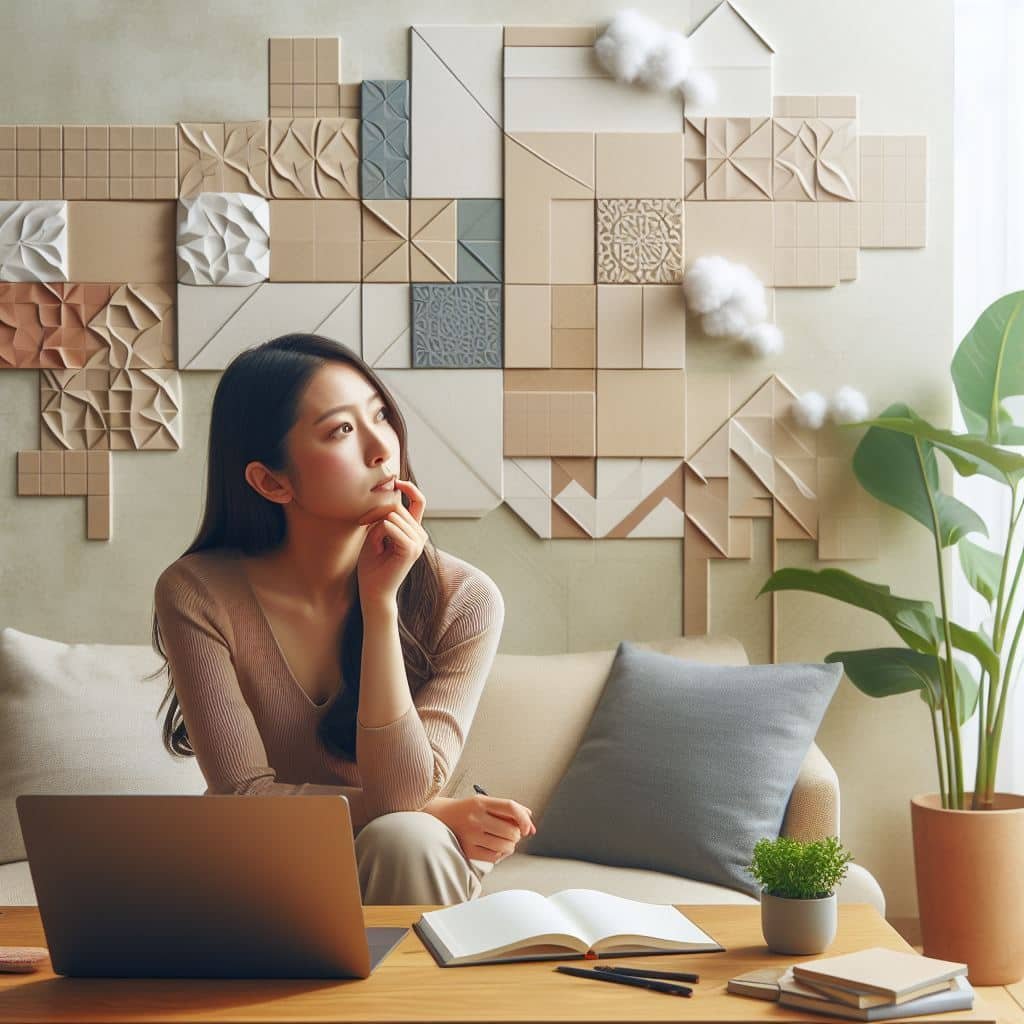In the world of interior design, a feature wall is an eye-catching focus point that makes a room look better. Designing a feature wall takes a thoughtful mix of imagination, functionality, and a good eye for design principles. You can use it to add personality to your living room or make a striking backdrop for your office. You will find step-by-step steps in this guide on how to create a feature wall that fits your space and shows off your personal style.
1. Understanding the Purpose
It’s important to know what you want your feature wall to do before you start building it. Are you trying to incorporate some color, add some texture, or show off a group of artwork? Figuring out the goal will help you make design choices and create a unified look.
2. Choose the Right Wall
The first step in the planning process is to choose the right wall for your feature. Think about walls that naturally get people’s attention, like the wall across from the door or the wall behind a bed or sofa that stands out. You should also pick a wall that gets enough natural or manufactured light to make your design stand out more.
3. Select the Perfect Color Palette
Color is very important when it comes to setting the mood for your main wall. Choose colors that go well with the room’s current color scheme while also adding a bit of contrast to make things look interesting. People often choose earthy colors like deep greens, blues, or warm neutrals, but if you want to create a lively and upbeat atmosphere, don’t be afraid to use bright colors.
4. Embrace Unique Textures
Texture is a strong design element that can make a feature wall stand out from the rest. To give your room more depth and volume, try using things like reclaimed wood, textured wallpaper, or 3D panels. By mixing and matching patterns, you can make an experience that is both visual and tactile.
5. Incorporate Statement Artwork
Adding artwork that makes a statement is one of the best ways to plan a feature wall. Artwork, like a mural, a big painting on canvas, or a gallery wall of framed prints, makes a space feel more personal and sparks conversation. Think about the style and mood you want to create, like modern, diverse, or simple.
6. Install Eye-Catching Wallpaper
Wallpaper is a flexible material that can change the look of a room right away. If you want to make a statement, choose big patterns, soft textures, or even a painting. Peel-and-stick posters made today make installation very easy, and they let you try out different styles without committing to one.
7. Create a Gallery Wall
A display wall is an interesting way to show off a group of photos, artwork, or even personal items. In a grid, arrange the frames for an organized look. For a more freestyle look, use a variety of sizes and shapes. With this method, you can add your own style to the pattern, and it can change as you add new pieces.
8. Utilize Accent Lighting
Using lights in the right places can make your feature wall stand out more. You could use wall sconces, picture lights, or spotlights that you can adjust to draw attention to artwork or architectural features. Light and shadow working together gives the design depth and makes the environment lively.
9. Think Beyond Paint
A fresh coat of paint can make a wall look different, but you could also use other materials to make the wall more interesting. A unique and stylish feature can be made with wood paneling, open brick, or decorative tiles. If you touch these materials, they give the area a different feel and make it look better overall.
10. DIY Feature Wall Ideas
There are many do-it-yourself feature wall ideas for people who like to try new things and are watching their budget. Do-it-yourself projects, like using painter’s tape to make a geometric accent wall or reusing wood planks to make a wall, give you a sense of success and a personal touch.
Conclusion
It’s fun and rewarding to design a feature wall that adds style and personality to your living or working area. You can make a focus point that not only stands out but also shows off your personal style and tastes by carefully choosing colors, textures, artwork, and lighting. You can make a feature wall that stands out for all the right reasons by balancing imagination with functionality. This is true whether you choose a bright and bold look or a more understated and classy one.






Leave a comment
You must be logged in to post a comment.